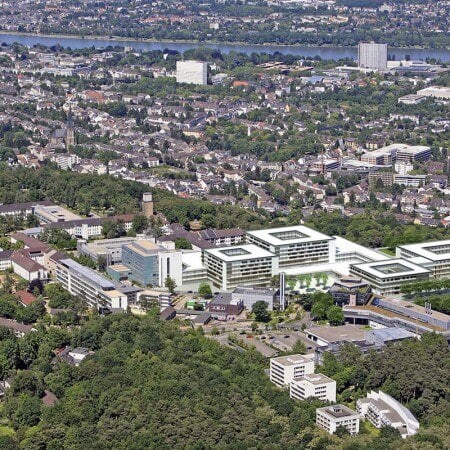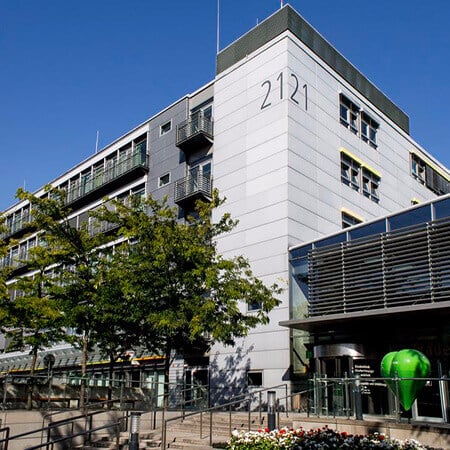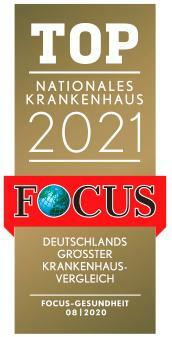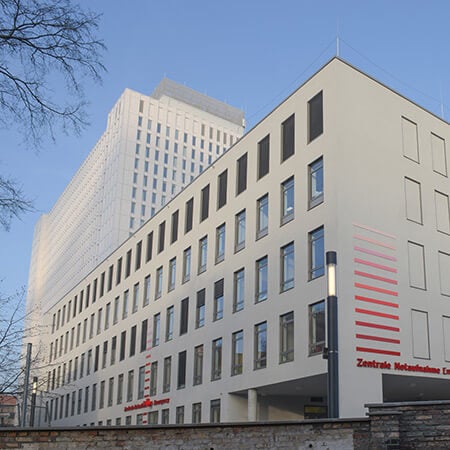Bile duct stones are detected in every fourth patient with gallstone disease. This condition is the cause of biliary colic, jaundice, cholangitis, cholecystitis, pancreatitis, and other complications, up to peritonitis, given there was no timely treatment provided. Even after gallbladder removal surgery, stones may remain in the bile ducts, which can be the reason for revision surgical interventions. If you are going to have gallstone disease treatment, you can opt for the treatment in Germany. Doctors successfully treat this disease with minimally traumatic techniques, usually without abdominal incisions, but by using endoscopic procedures.
Content
- Who needs choledocholithiasis treatment?
- Endoscopic treatment
- Percutaneous procedures
- Surgical treatment
- How to undergo bile duct stone treatment in Germany?
Who needs choledocholithiasis treatment?
Gallstone disease is one of the most common diseases on the planet. It affects from 10 to 15% of the population in different countries. The main causes are obesity, genetics, and the intake of medicines.
The stones can penetrate the ducts from the gallbladder. Sometimes they enter into the intestines without causing any symptoms. If the stone cannot come out and blocks the duct, the patient develops biliary colic, which is increasing pain in the right hypochondrium. In most cases, the stone still moves into the intestines, and colic disappears, but if this does not happen, then the patient will develop a complication such as acute cholecystitis. This disease requires emergency surgical treatment, which is more dangerous for the patient than a planned surgical procedure.
If stones enter the common bile duct, the following complications are possible:
- jaundice;
- cholangitis (inflammation of the bile ducts);
- pancreatitis (inflammation of the pancreas);
- cirrhosis.
The risk of complications is about 25% in symptomatic patients. If there are no symptoms, choledocholithiasis is usually benign. Many complications of bile duct stones, however, are severe and even life-threatening, so all symptomatic patients should undergo treatment with the use of endoscopic or surgical techniques.
There are many treatment methods for bile duct stones. The stones can be removed from the intestines through skin incisions, punctures, crushed, destroyed with a laser, etc. The choice of treatment option depends on the location, size, number of stones, the patient's health condition, as well as the experience of the surgeon, and the technical equipment of the gastroenterology department in which you are being treated. Patients with bile duct stones treated in Germany can count on less traumatic and safer procedures, after which the risk of complications is low and the recovery period is as short as possible.
Endoscopic treatment
If the patient has stones in the bile ducts, but they are absent in the gallbladder, then doctors in developed countries prefer to perform the endoscopic treatment. It is minimally traumatic for the patient. Although such interventions are technically complex, there are no problems with either experienced specialists or modern equipment in Germany. Therefore, some endoscopic interventions for bile duct stones are constantly increasing, replacing conventional surgical techniques.
Endoscopic papilla-sphincterotomy is the main method of endoscopic treatment. The doctor inserts the endoscope into the patient's intestines and dissects the major duodenal papilla, which is located in the duodenum. The bile and pancreatic ducts open through the major duodenal papilla into the intestinal lumen. The stone usually gets stuck here. After dissection of the papilla, the stone can go into the intestines.
The procedure effectiveness is 82%, and in the best German hospitals, it reaches 92%. The risk of complications does not depend on the patient's age, but the health risk depends on the skill and experience of the surgeon. Clinical trials show that complications are much less common when endoscopic papilla-sphincterotomy is performed by a doctor who performs more than 100 such procedures annually.
Below are the situations when a standard papilla-sphincterotomy is ineffective:
- a large stone, the diameter of which is larger than the diameter of the common bile duct orifice;
- cicatricial stricture, which interferes with the movement of the stone;
- diverticula (wall protrusion) of the duct near the papilla;
- stenosis (narrowing) of the bile duct in the distal (closest to the intestines) section;
Such cases account for about 10%. In addition, some patients show signs of bile duct inflammation or jaundice at the time of admission to the hospital. Faced with such difficulties, many physicians refuse endoscopic treatment and proceed to open surgery. Nonetheless, the specialized centers manage to perform complex endoscopic procedures that still allow the doctor to remove stones without causing any complications.
Balloon dilatation of the major duodenal papilla (papillary balloon dilation) is an alternative treatment option that does not require incisions. The sphincter apparatus is preserved, which reduces the risk of developing long-term complications. Despite all the advantages, the method is not widely used, since its capabilities are limited. It allows the doctor to remove single stones up to 1cm in size, without biliary hypertension, stenosis, and dysfunction of the sphincter of Oddi.
Mechanical lithotripsy is the destruction of the stone to remove it in parts. In this case, a mechanical lithotripter is used. This device allows the doctor to grab the stone and crush it into fragments. Doctors can destroy stones up to 4 cm. The effectiveness of the procedure exceeds 90%. For stones up to 2 cm, it is close to 100%.
Endobiliary laser lithotripsy is an innovative technique that is more effective and safer. The stones are destroyed not mechanically, but with a holmium laser. Due to the small depth of penetration of the pulse, it does not damage tissue. The doctor crushes the stones and then removes them piece by piece. The use of the laser makes it possible to extract stones of almost any size, thereby reducing the risk of both early and long-term complications. Laser lithotripsy is effective in 96% of patients. It is effective even for large and very dense calcified stones.
Transpapillary stenting is the implantation of a stent (plastic tube) inside the duct. The procedure is rarely used for choledocholithiasis. It is reported to if the endoscopic method of removing all the stones fails, surgical intervention is contraindicated. The stent creates favorable conditions for the outflow of bile into the intestines. It also prevents stones from entering the lobar ducts to avoid blockages.
It is usually a temporary solution to the problem. After normalization of the patient's condition, surgery is performed. In addition, new types of stents, which do not need to be replaced as often as they used to be, are increasingly being used for the final treatment of patients with bile duct stones. They are mainly used in the elderly, as well as in people weakened by diseases. Doctors in Germany use modern drug-eluting stents, which prevent the deposition of calcium salts and the growth of bacteria in the stent.
Percutaneous procedures
Percutaneous procedures are performed through a skin puncture. They are used to eliminate obstructive jaundice caused by the blockage of the bile ducts by stones.
These manipulations began to be carried out in the 20th century, but in the 21st century, their frequency increased due to the improvement of instruments and a decrease in the risk of complications. Doctors use thin flexible needles, modern ultrasound systems, and X-ray guidance. The needle is inserted into the bile ducts through the skin. The instruments can be delivered through it to perform additional manipulations.
The main goal of the percutaneous procedure is to ensure the outflow of the bile. If the bile cannot enter the intestines because the ducts are clogged with stones, then excreted through the skin into the external environment.
In addition, German hospitals perform the following manipulations with percutaneous techniques:
- choledocholithotripsy is the crushing of stones in the common bile duct;
- choledocholithoextraction is the extraction of stones;
- antegrade descent of stones into the duodenum.
The specialized centers use combined interventions such as the "rendezvous" technique. It includes the simultaneous use of antegrade (percutaneous) and endoscopic approaches. Although these procedures are technically complex, they can even treat many complex cases of choledocholithiasis without resorting to open surgery.
Surgical treatment
Several types of surgical interventions can be used in patients with bile duct stones.
Laparoscopic cholecystectomy is the main surgical intervention for the treatment of gallstone disease. It is one of the most frequent operations not only in gastroenterology but in general in medicine. The gallbladder is removed if it is non-functioning and filled with stones. There are bladder-sparing stone removal surgical interventions, but they are not widely used due to the high recurrence (recurrent stone formation) rate.
There are the following options for cholecystectomy depending on the type of a surgical approach:
- laparoscopic cholecystectomy is performed through short incisions, using long thin instruments, under the guidance of a tiny video camera;
- cholecystectomy with a laparotomic approach is performed through a large abdominal incision (a standard operation that was considered the main one in the 20th century and is still practiced in countries with poorly developed medicine);
- cholecystectomy with a mini-laparotomy approach is a more sparing type of open surgery through a 4-5cm long incision.
In Germany, most cholecystectomies are performed laparoscopically. The doctors make four incisions 1-2cm long.
Laparoscopic stone extraction. If there are no stones in the gallbladder, and they are detected only in the ducts, then cholecystectomy is not necessary. Laparoscopic stone extraction is effective for stones up to 1cm in size. Most patients have a narrowed cystic duct, so it is dilated with a dilator. Then, a choledoscope is inserted. Small stones up to 5mm are washed out through the papilla, and the larger ones are removed with a basket.
Laparoscopic choledocholithotomy is used for large stones. The doctor cuts the duct. The visible stones are removed with forceps, while the small ones and those located closer to the intestines are pushed through and washed out. The remaining stones are removed with a basket. The large and embedded stones are crushed by electrohydraulics or a laser. Subsequently, they are removed from the side of the incision with a basket. Otherwise, they are pushed into the intestines through the major duodenal papilla. The duct is closed with a clip or drainage is left open if the inflammation has developed. Drainage is removed after 2-3 days.
Open surgery is very rare in Germany since even in complex cases it is usually possible to manage the disease with laparoscopic surgery. However, about 4% of patients require conversion to open surgery. The causes are narrow and tortuous bile ducts, embedded or intrahepatic stones, cholecystoduodenal fistula, as well as intraoperative complications: bile duct rupture, duodenal injury, or bleeding.
How to undergo bile duct stone treatment in Germany?
Many patients with bile duct stones prefer to undergo treatment in Germany because of top-class medical services. Please use the Booking Health service to get up-to-date and accurate information about the cost of treatment in Germany, compare prices in different German hospitals, and book a medical care program at the best price. The treatment in Germany will be easier and faster for you, and the cost of treatment in Germany will be lower.
Please leave your request on the website of the international medical tourism agency Booking Health. Our employees will contact you, provide advice, and answer your questions. We will take care of the arrangements for your trip. We will provide the following benefits to you:
- We will select a German hospital with the best gastroenterology departments whose doctors specialize in the treatment of patients with choledocholithiasis and achieve good results.
- We will help you overcome the language barrier and establish direct communication with a doctor at a German hospital.
- The waiting period for the treatment in Germany will be reduced, and you will receive medical care on the most suitable dates.
- We will reduce the price. The cost of treatment in Germany will be lower than usual. It will be reduced due to the lack of overpricing and additional coefficients for foreign patients.
- Our specialists will solve any organizational issues: preparation of documents, transfer from the airport to the German hospital, and back, hotel booking, and interpreting services.
- We will prepare your documents and translate them into English or German. You do not have to undergo the previously performed diagnostic procedures.
- We will keep in touch with the German hospital after the completion of your treatment in Germany.
- We will arrange additional treatment in Germany, diagnostics, or rehabilitation if required.
- We will buy medicines in Germany and forward them to your native country.
While the best specialists in the world are taking care of your health, the specialists of the Booking Health company will help you reduce the cost of treatment in Germany and take care of all your travel arrangements.
Authors:
The article was edited by medical experts, board certified doctors Dr. Vadim Zhiliuk and Dr. Sergey Pashchenko. For the treatment of the conditions referred to in the article, you must consult a doctor; the information in the article is not intended for self-medication!
Sources:
Sience Direct
PubMed
Verywell Health



















